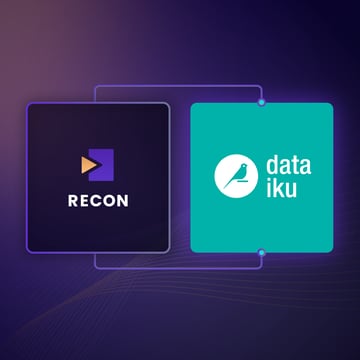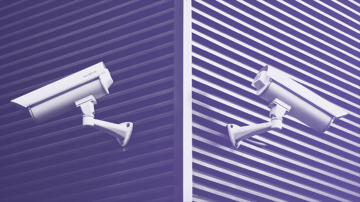Does Your Company Need A Chief AI Officer?
Written by Ian Swanson for Forbes
Introduction
The rapid mainstreaming of artificial intelligence (AI) has led the U.S. government to set some new guidelines for safe AI development that could have repercussions in the corporate C-suite. In March 2024, the Office of Management and Budget (OMB) issued a memorandum setting down a number of practices and requirements that govern the use of AI among federal agencies. Among these is the requirement that "each agency must designate a Chief AI Officer (CAIO) within 60 days of the date of the issuance of this memorandum."
The CAIO will be tasked to set up, supervise and enforce safe and responsible use of AI in their agencies. They will also coordinate with other agencies (including the Departments of Commerce and Homeland Security) and report their progress regularly to the director of the OMB.
Historically, the government has lagged behind private industry in terms of organizational structure and process. But uncharacteristically, the government is now leading the way in corporate governance of AI. Given this development, should the C-suite—the top decision-making body of a corporation—create a similar role?
Why Not A CAIO?
Consolidating all responsibility for AI under a CAIO may work for the federal government, but the private sector has a longer history with this technology. In fact, enterprises have been using AI for over a decade—in other words, long before the government understood it as a new technology domain. And just like every other technological transition—such as mobile, software as a service and the cloud—a small group of trailblazers who really understood AI led the way and became directors of AI. But as AI has become more pervasive and impactful, the scope of functions has become too large for a single manager—whether it's a director of AI or CAIO.
A more nuanced approach to AI leadership and governance is needed within enterprises. Instead of a CAIO, private sector organizations should supplement the existing director of AI role with a director of AI security, or even potentially a CAISO. This structure not only aligns with the complexity and breadth of AI’s impact across the organization but also ensures a more focused, effective oversight of two critical and separate AI disciplines.
1. Development and deployment.
2. Security, safety and governance
Specialization And Focus
The first pillar of this argument rests on the necessity for specialization and focus. AI, as a domain, encompasses a broad spectrum of technologies, applications and implications, ranging from machine learning models to AI-driven analytics and decision-making systems. The director of AI’s role should concentrate on steering the development, engineering and deployment of AI technologies. This focus allows for a dedicated pursuit of innovation, operational efficiency and competitive advantage through AI, ensuring that the organization remains at the forefront of technological advancement.
Conversely, the realm of AI security, safety and governance warrants a distinct, equally specialized leadership role. The director of AI security should navigate the increasingly complex regulatory landscape, address ethical considerations and implement robust security frameworks to mitigate risks associated with AI deployments. This role is pivotal in ensuring that AI technologies are utilized responsibly, ethically and in compliance with both existing and emerging regulations. Simply put, to manage the emerging risk within AI, organizations must invest in this domain now, with the understanding that this is the path to embedding security into the fabric of their operational model in years to come.
Mitigating The Talent Gap
The burgeoning demand for AI expertise outstrips the current supply, creating a significant talent gap. A McKinsey report warned that a talent shortage is holding back AI development, as companies try to adopt the technology faster than staff can be trained on it. By dividing the leadership into two focused roles, organizations can mitigate this challenge more effectively.
Each role requires a unique set of skills and knowledge—where the director of AI needs to be adept at identifying and leveraging AI opportunities, the director of AI security must excel in risk management, regulatory compliance and ethical considerations, as well as have some basic understanding of AI and its unique complexities. This division allows for more targeted recruitment and development strategies, facilitating the cultivation of expertise within each domain.
Enhanced Governance, Risk Management And Compliance
This bifurcation of roles also enhances governance, risk management and compliance. The rapid development and deployment of AI technologies introduce novel risks and ethical dilemmas, from biases in decision-making algorithms to privacy concerns and beyond. A dedicated director of AI security ensures that these considerations aren't merely ancillary but are central to the AI strategy. This role embodies the organization’s commitment to ethical principles, acting as a guardian of integrity and trust in the use of AI.
A dedicated director of AI security is also better positioned to navigate the ever-evolving regulatory environment to ensure compliance with current regulations while quickly adapting to legislative changes. This proactive stance on compliance can safeguard the organization against reputational damage, legal penalties and operational disruptions.
Operational Excellence And Competitive Advantage
Finally, the separation into two distinct roles fosters operational excellence and a sustainable competitive advantage. By ensuring that the development and deployment of AI are underpinned by robust ethical and security frameworks, organizations can leverage AI technologies more confidently and effectively. This approach not only mitigates risks but also enhances stakeholder trust, paving the way for more ambitious AI initiatives.
Unlike government agencies that traditionally rely on procuring technology services and assets, private sector organizations are building and deploying AI and ML applications to harness the transformative power of AI and achieve a competitive advantage. That’s why the dual roles of director of AI and director of AI security are better suited to managing the complexity and multidimensional impact of AI in enterprise environments than a single CAIO.
Find a topic you care about
Get the best of Protect AI Blogs and News delivered to your inbox
Subscribe our newsletter for latest AI news. Let's stay updated!




